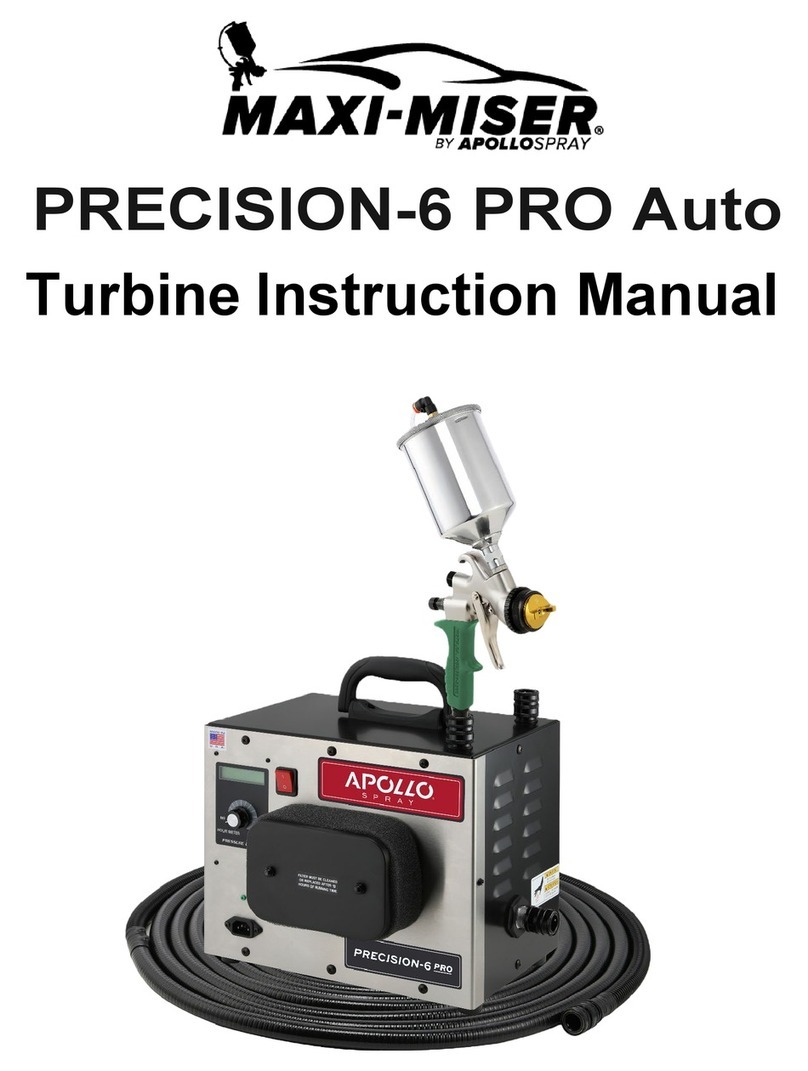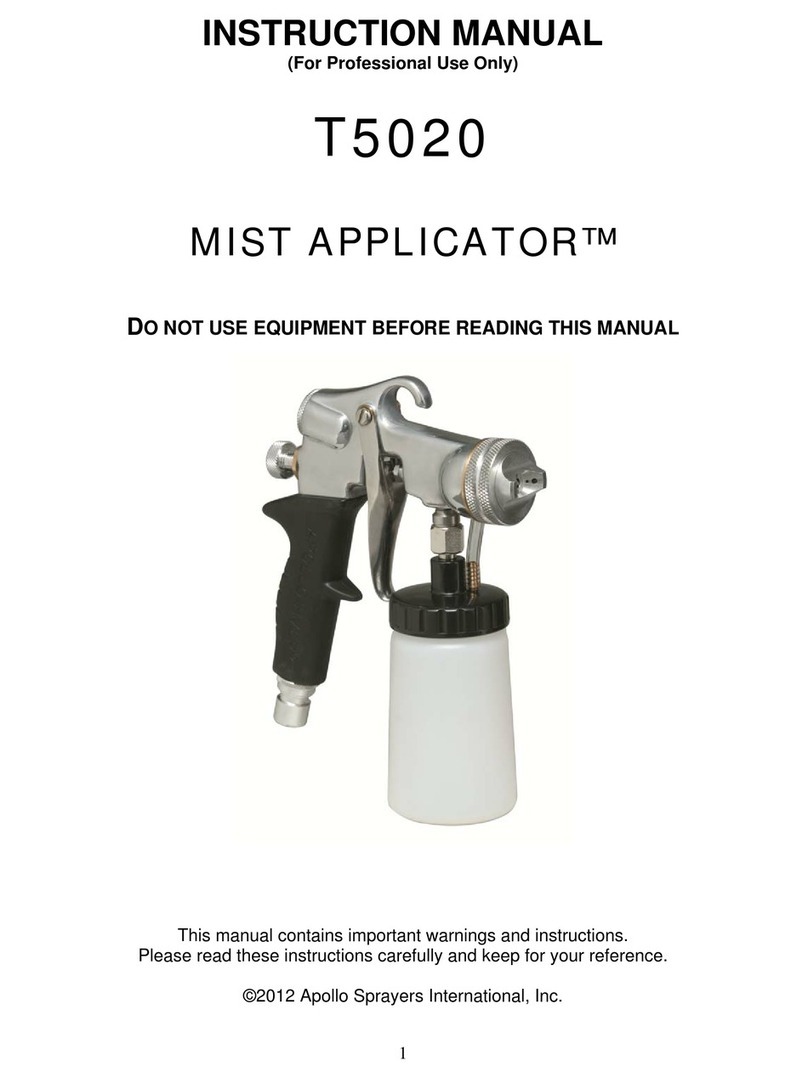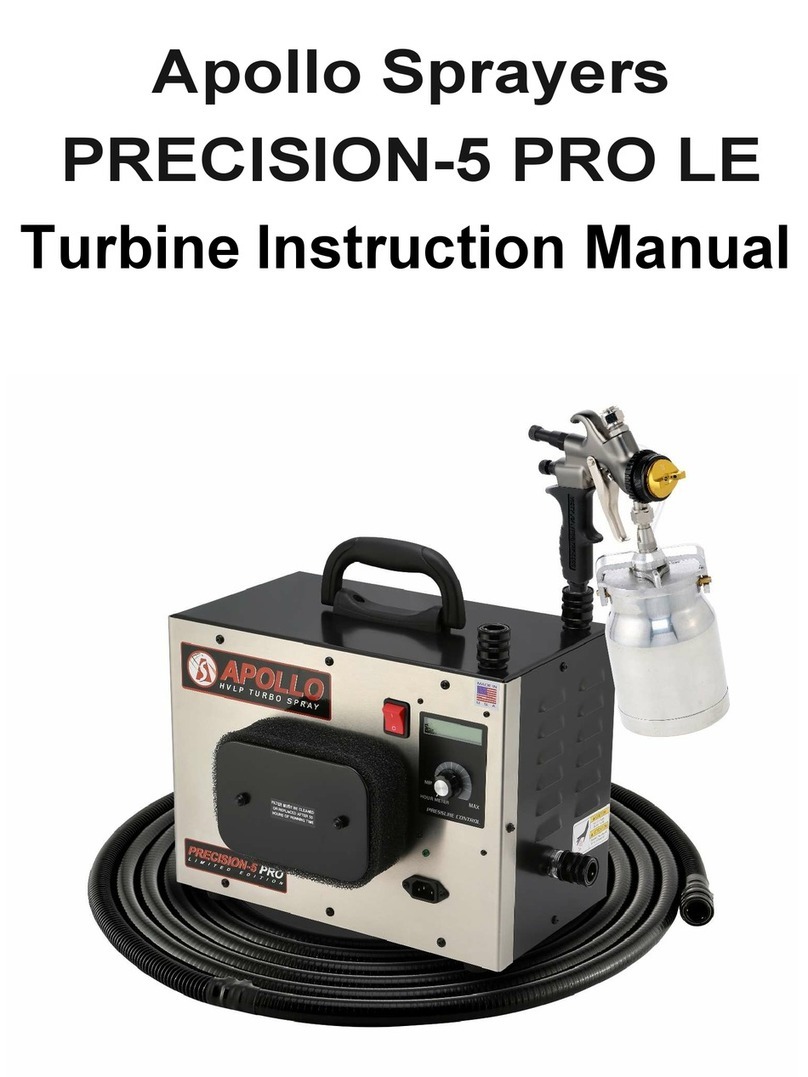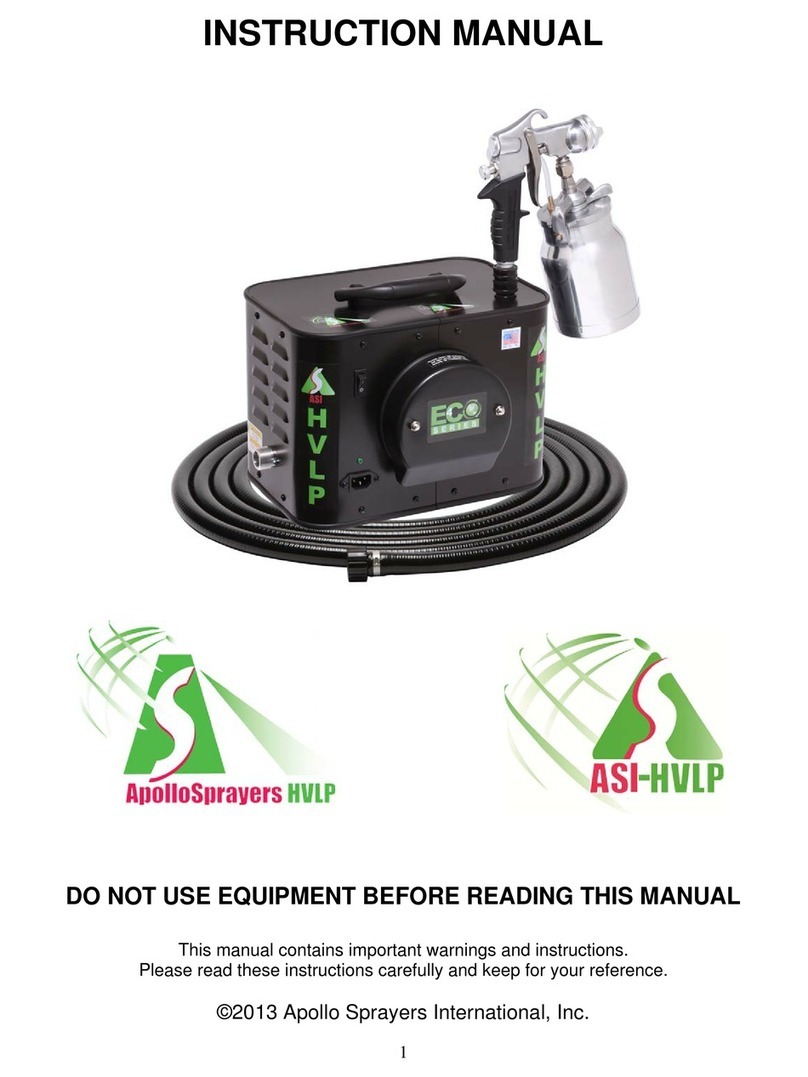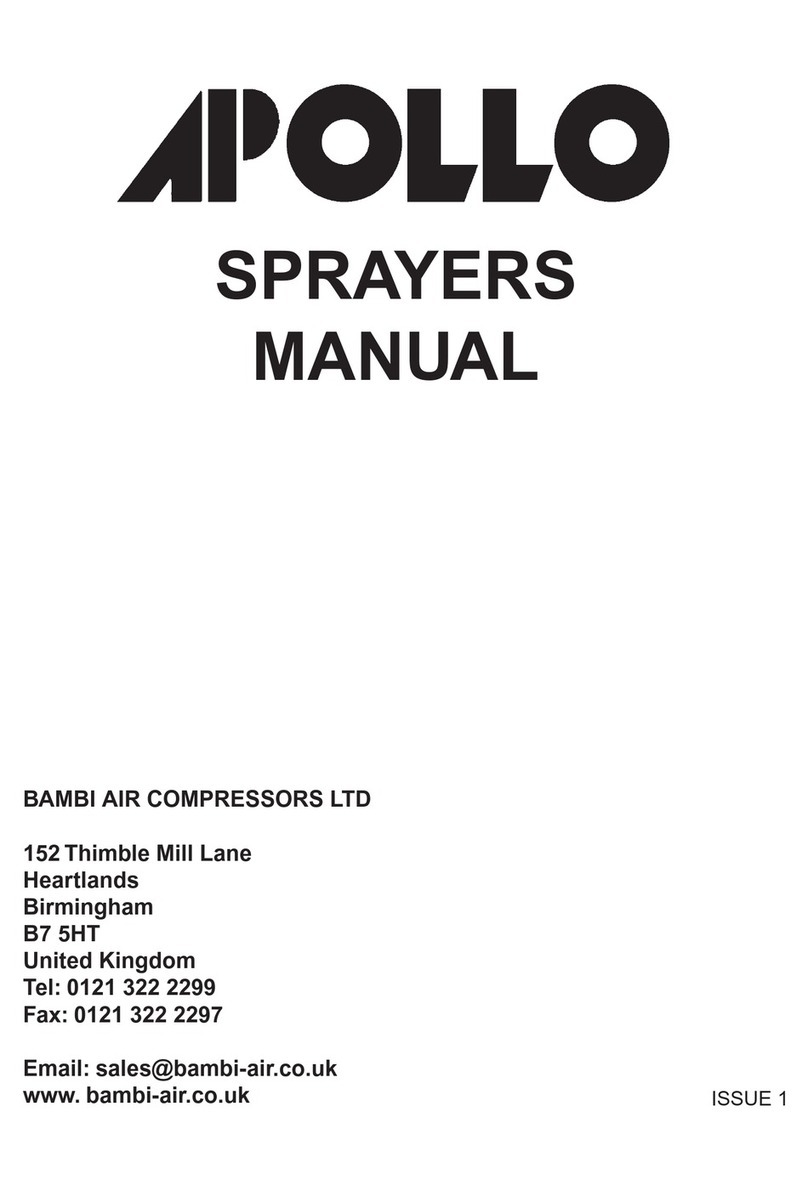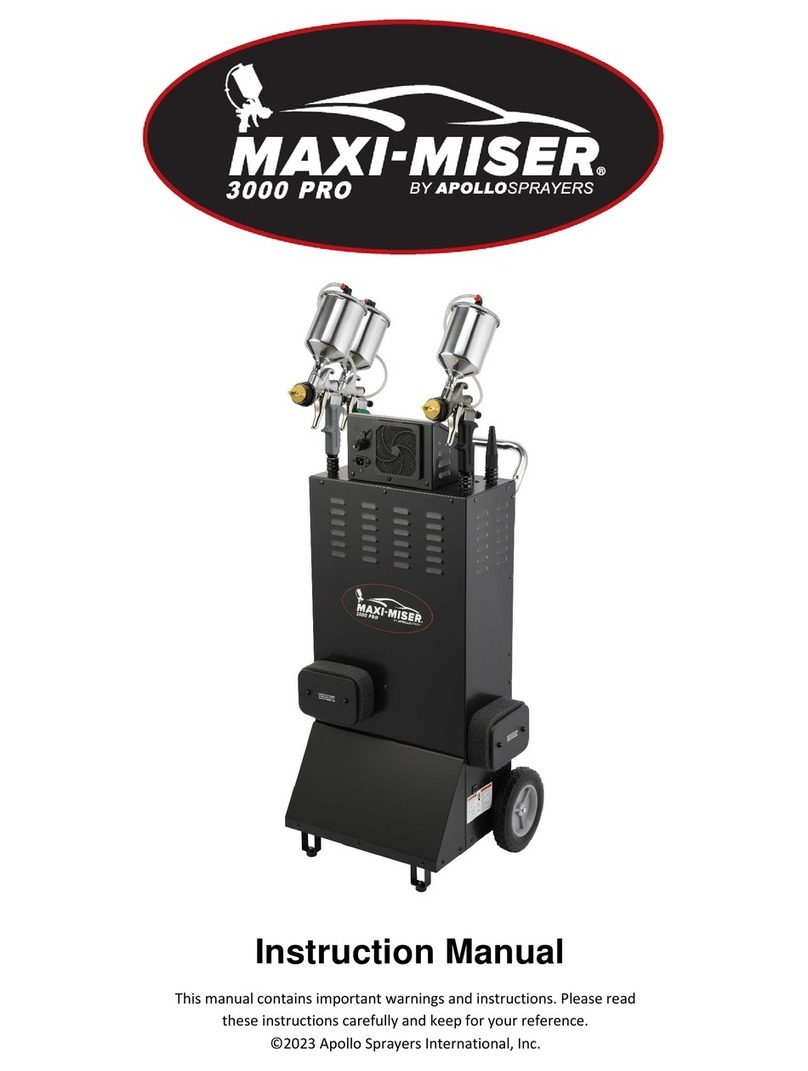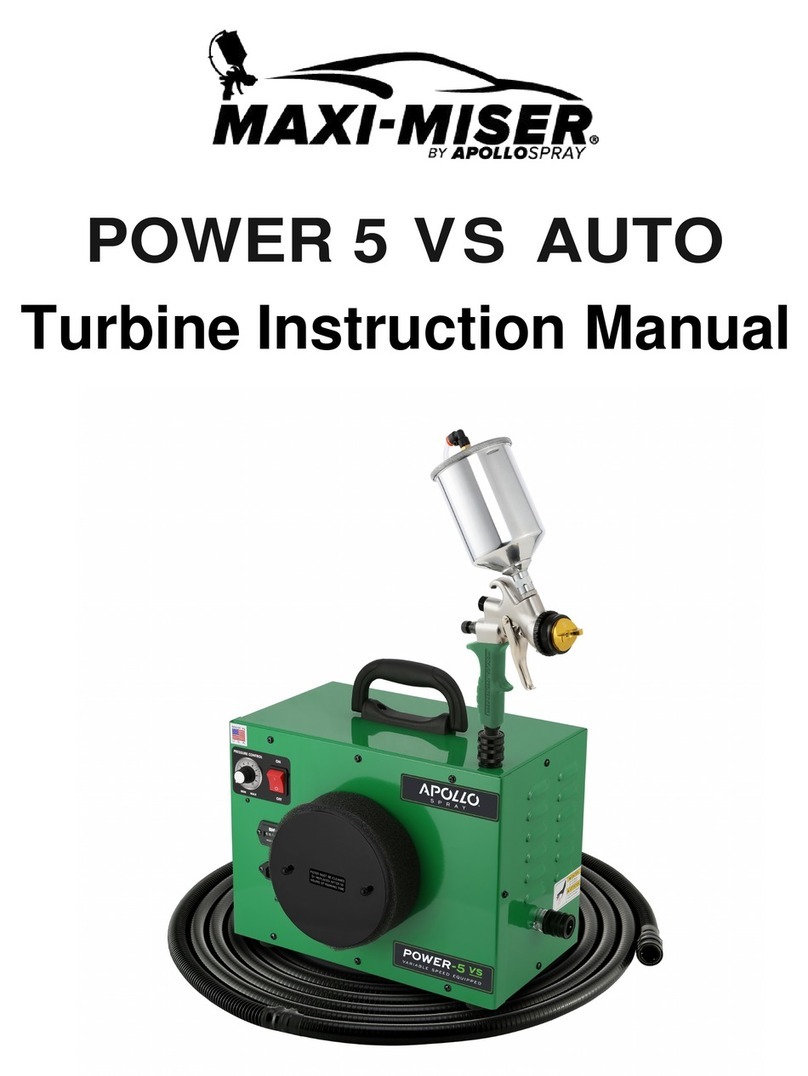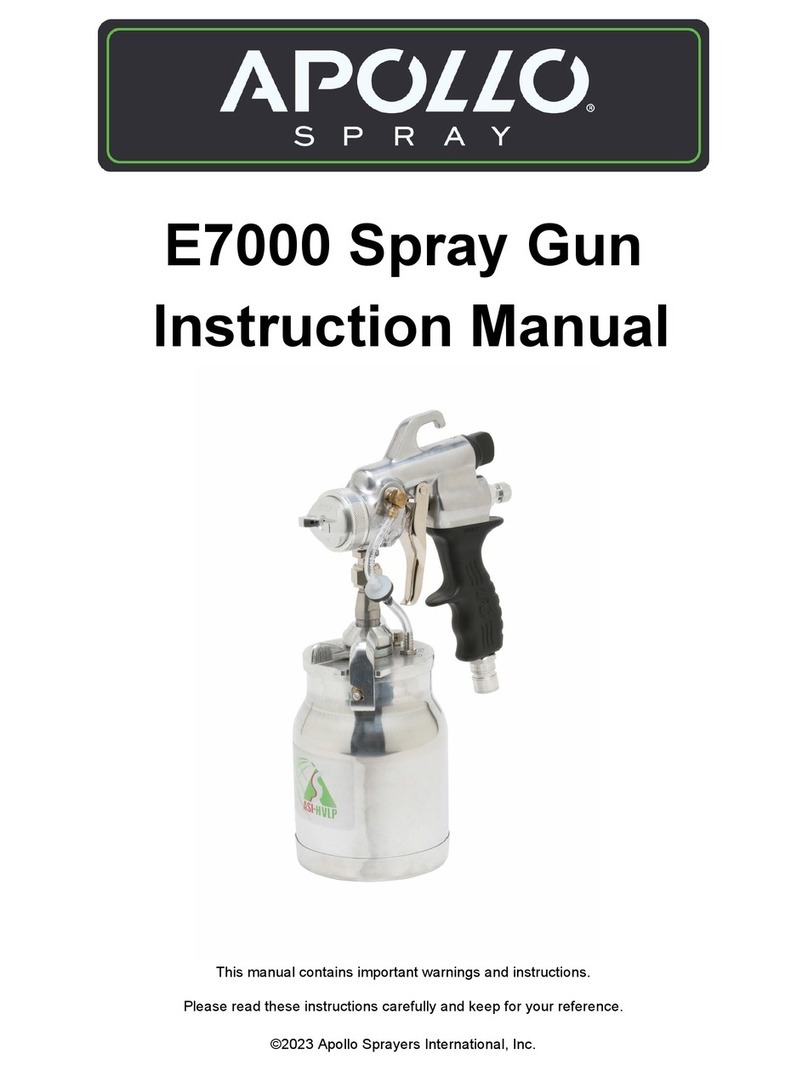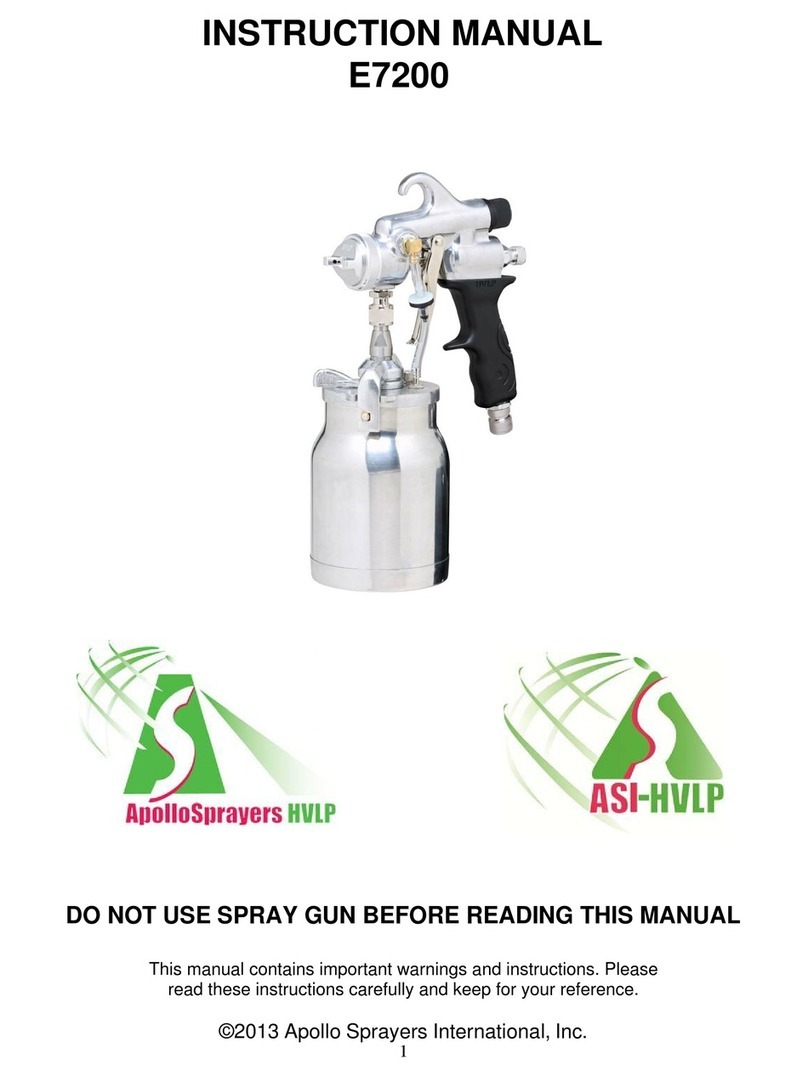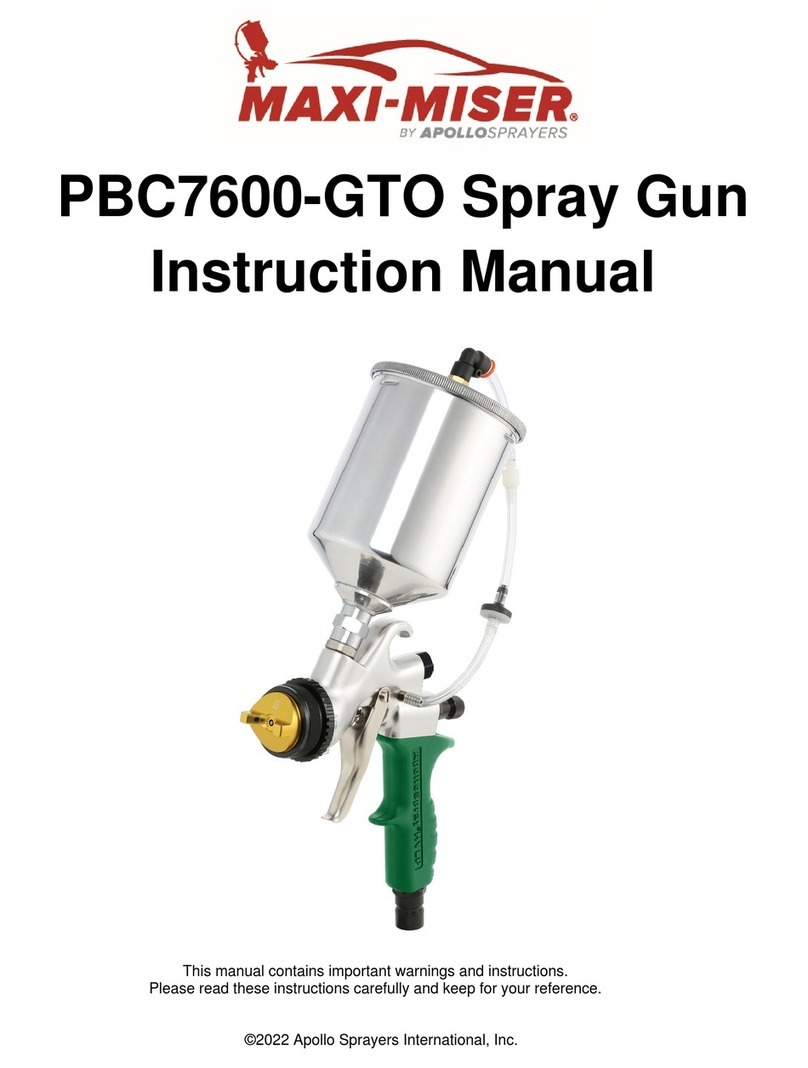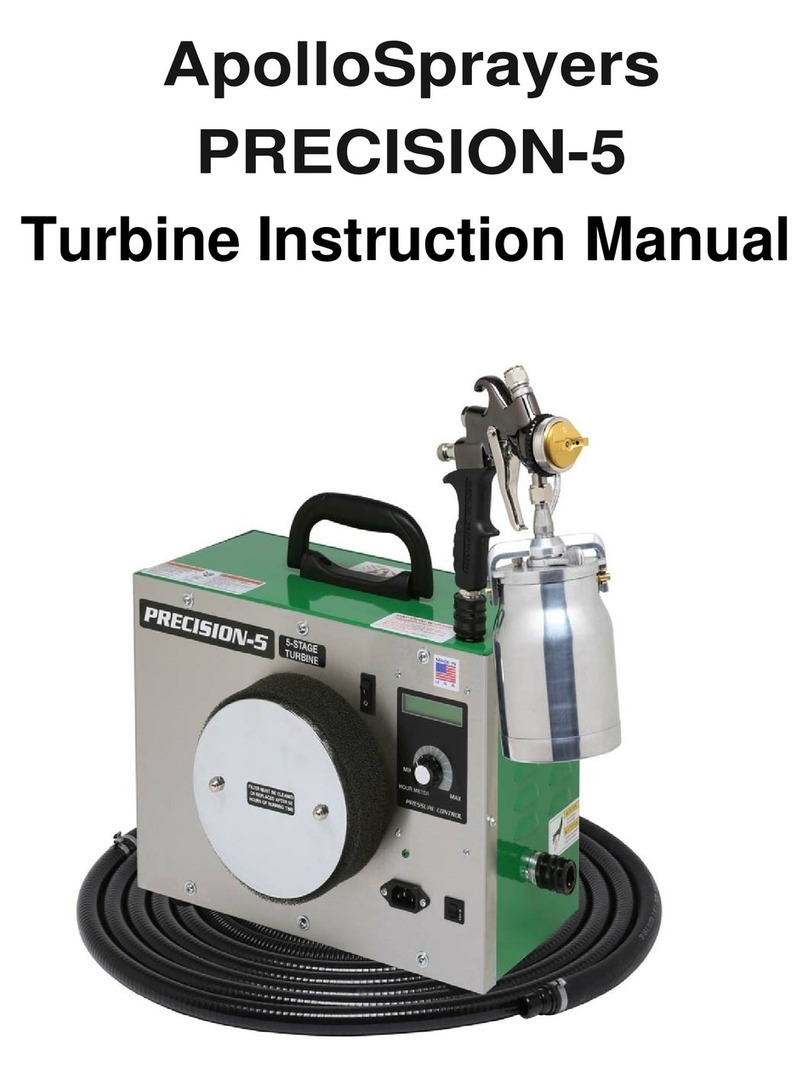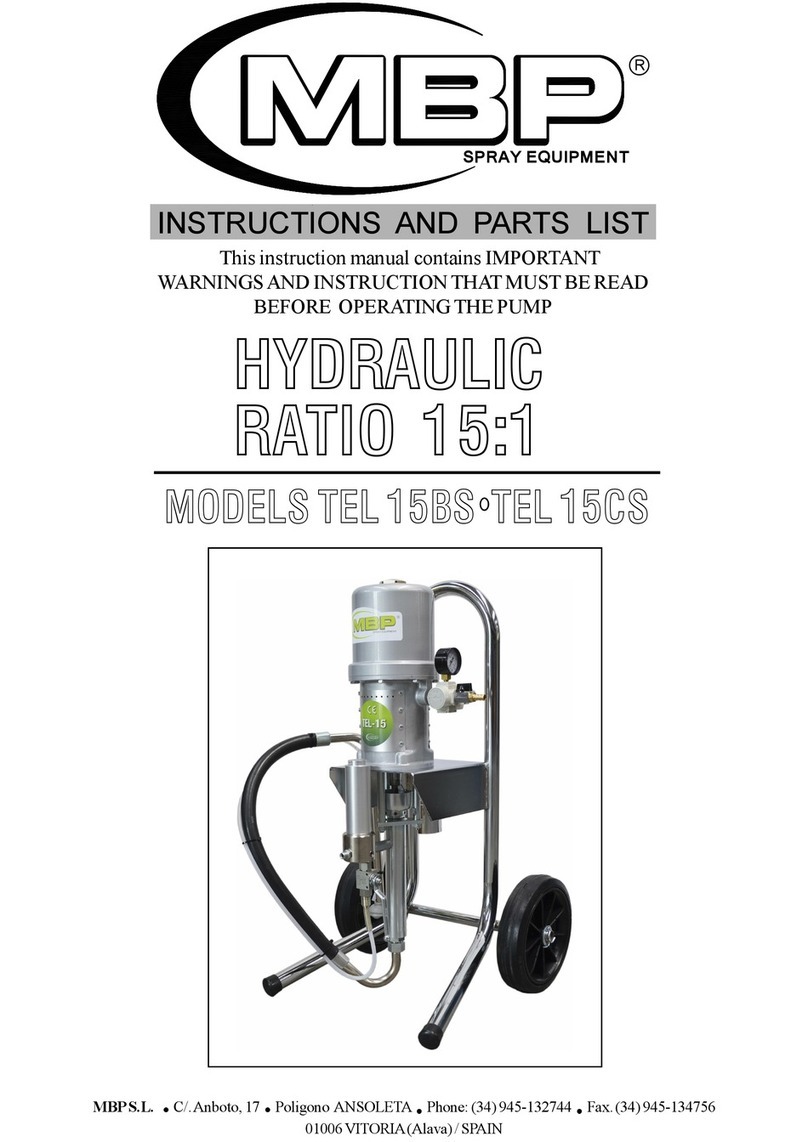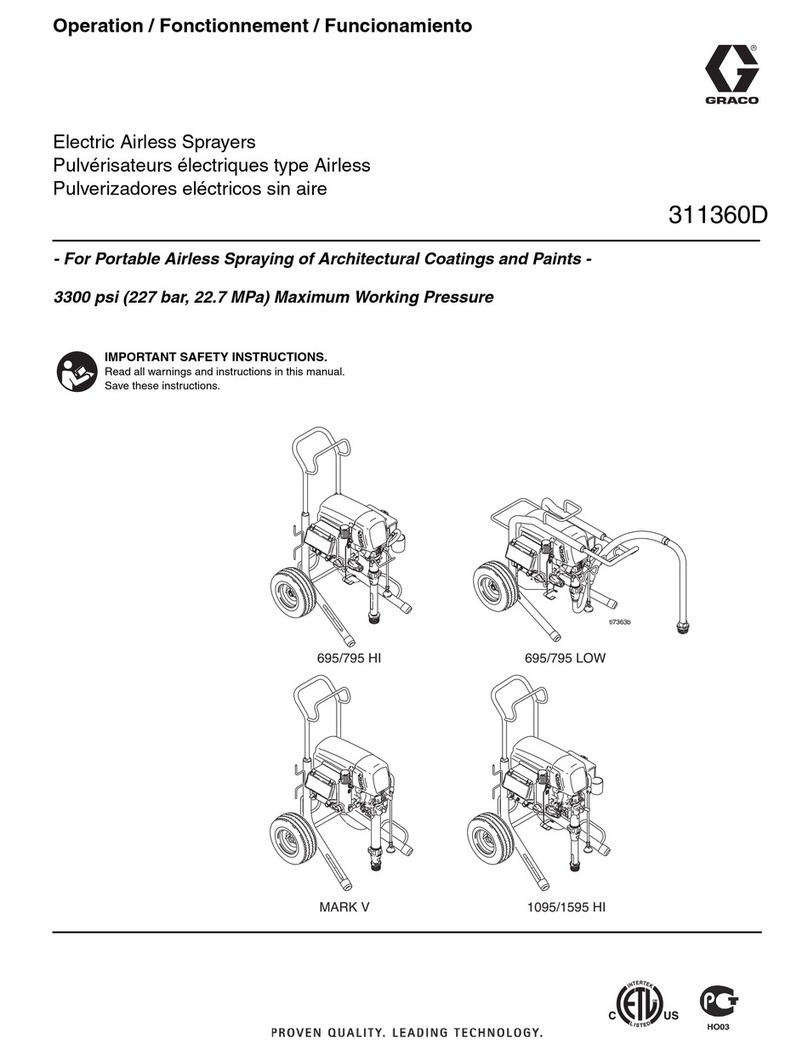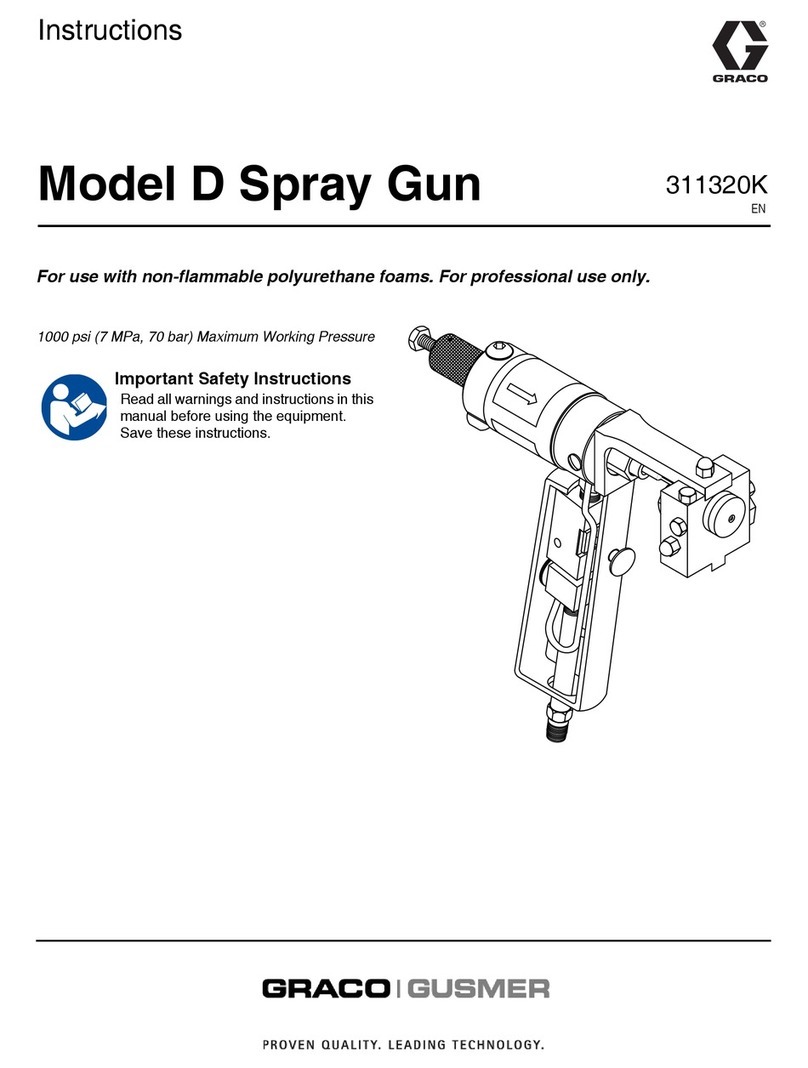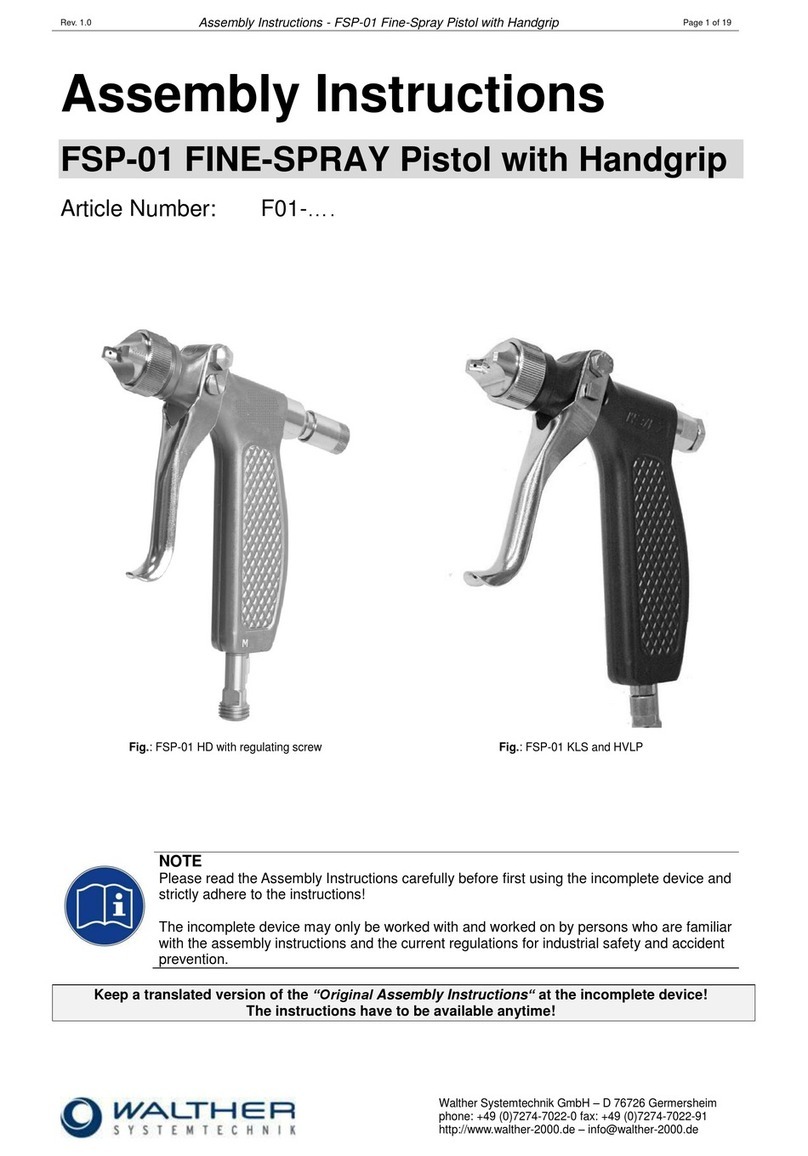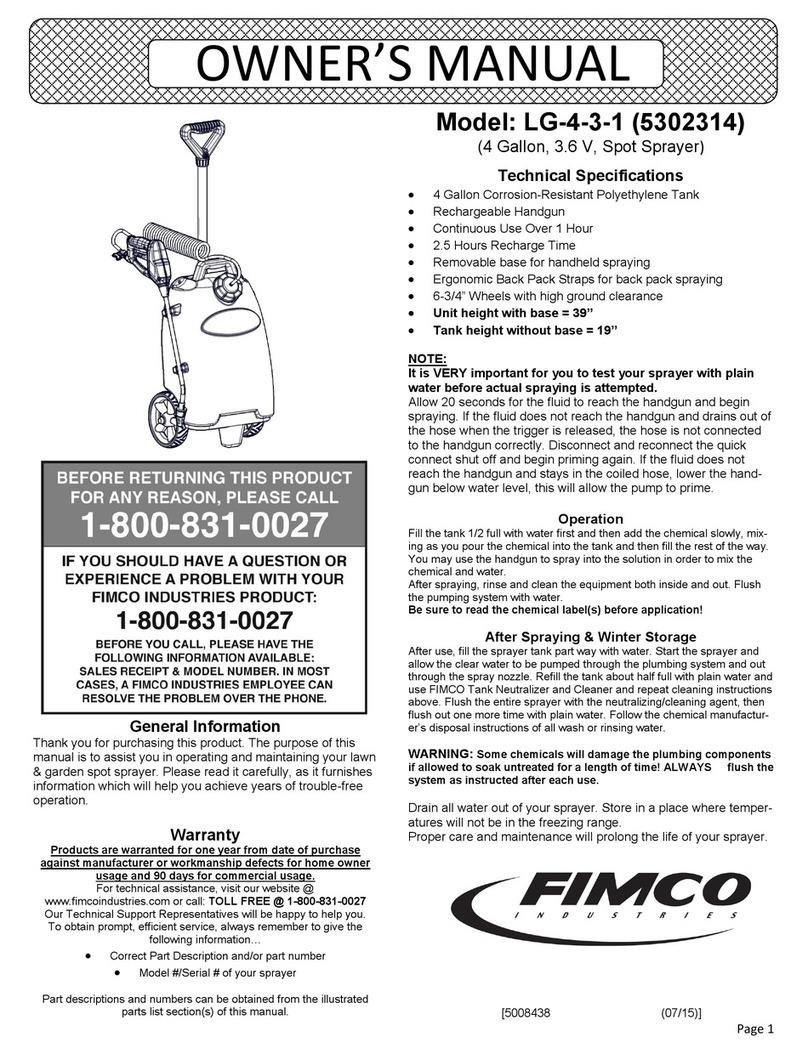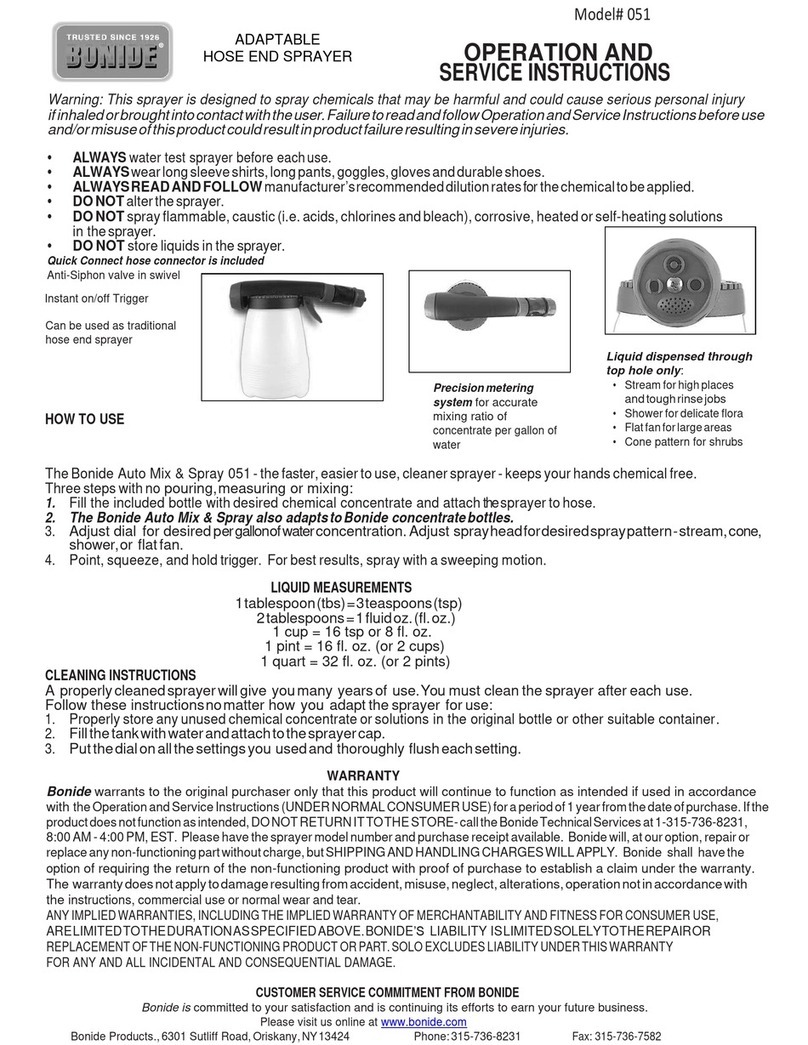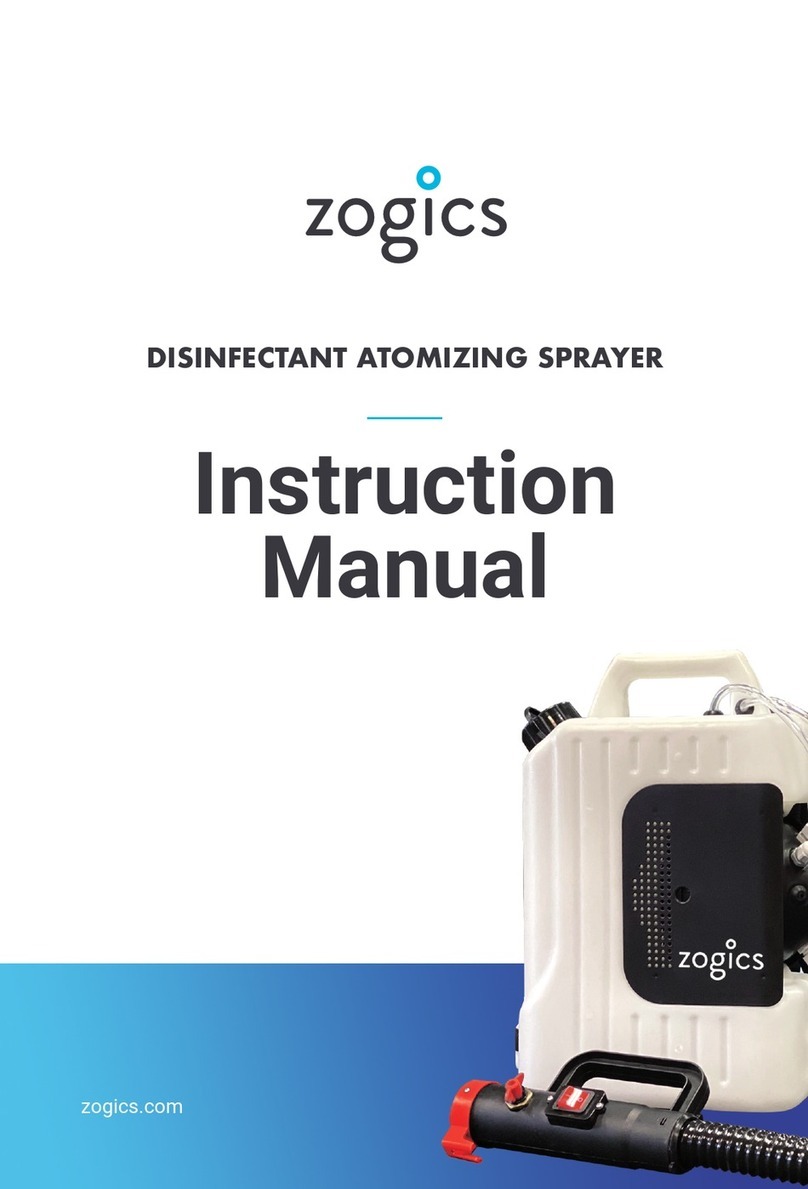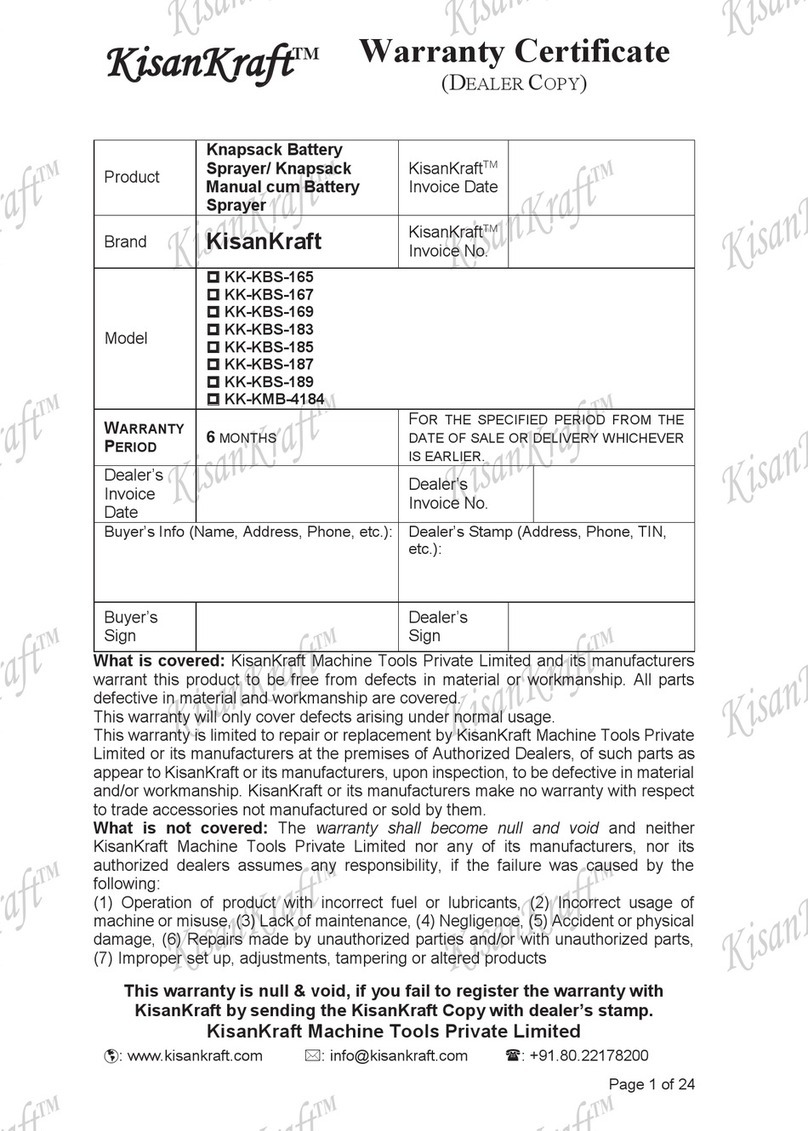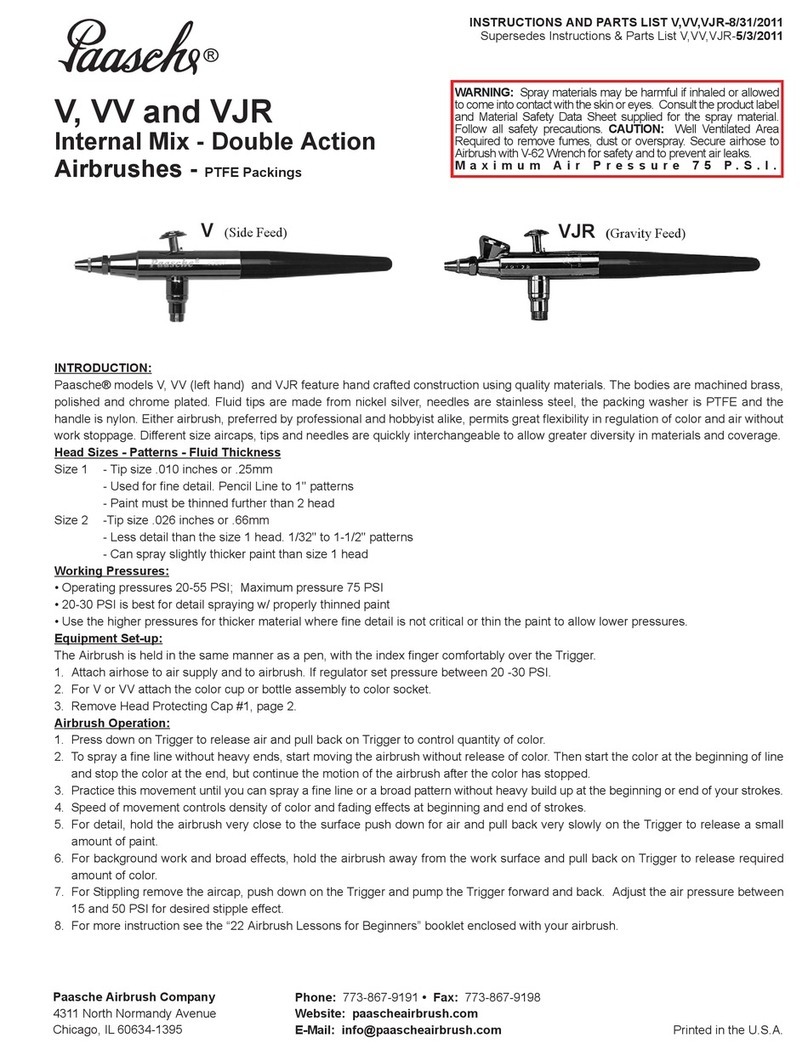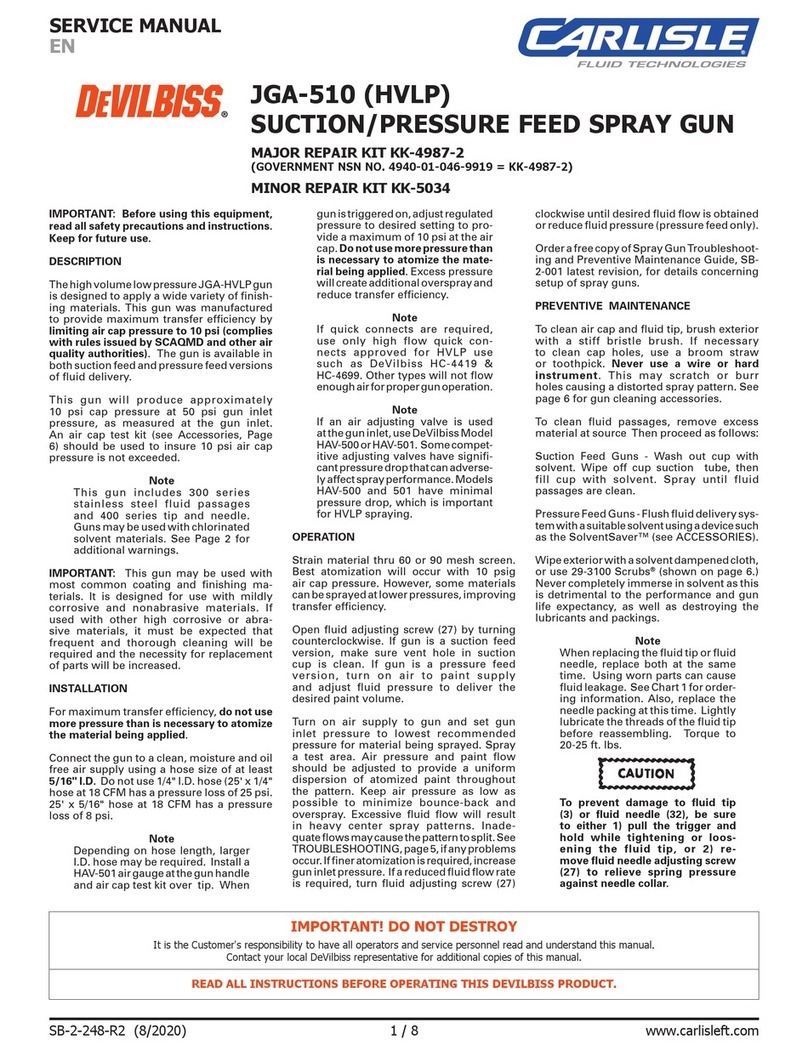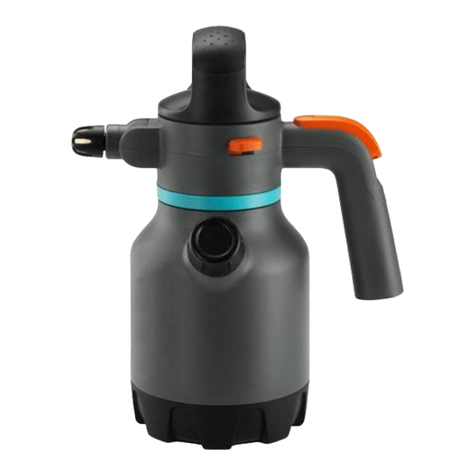
3 Apollo Turbine Model Precision-6
The model Precision-6 is the newest Precision Series turbine system by
Apollo Sprayers International, Inc. Apollo’s Precision Control System
(PCS™) allows you to control the air pressure from the turbine to within 1/10th
of a PSI. The Precision-6 comes supplied with one spray gun and a 37’ air
hose. The unit has the capability to run two spray guns using a garden hose
“Y” connector as long as the material you are spraying does not require the
full power of the system to adequately atomize it.
In order to operate the Precision-6 it is important to connect the hose and
spray gun. The turbine will not operate correctly without back pressure to
the motor, which means the spray gun and hose need to be connected.
The Precision-6 is NOT compatible with “Bleeder” style spray guns. Push
the male connector, on the air hose into the female quick connect on the
turbine. Push the female quick connect on the air hose onto the male end on
the spray gun handle. Your system is now connected.
To control the air pressure on the Precision-6 turbine, connect the spray gun and air hose with the turbine. Plug the turbine into
a 240 volt power supply. Rotate the control knob to the left hand side to the “Hour Meter” position. Push the ON/OFF switch to
the ON position. The control panel will now display the total number of whole hours of use. The factory has calibrated your
turbine motor for the maximum output pressure possible with the PRECISION-6. To get an accurate stable spraying pressure it
is advised that you let the turbine warm up for about 5-10 minutes. Once the turbine motor is warm the LCD will give you an
accurate pressure reading to 1/10th PSI. The maximum flow pressure of the PRECISION-6 is 10.5 PSI.
It is important to understand the difference between static or sealed pressure vs. flow pressure. When setting the turbine
pressure for spraying you should always set the flow pressure. You can set the flow air pressure from the spray gun, not the
material in order to set the flow pressure. This is why it is preferable to set the pressure without any material in the cup. Pull
the trigger and release the air from the spray gun. While continuing to pull the trigger, adjust the pressure on the turbine to the
spraying pressure of your choice. Once you have set the pressure release the trigger. The pressure will stay where you set
it.
Pull
the trigger again and watch the LCD screen. You will notice the air pressure drop and then go back to where you set the
pressure. This will work for any pressure setting.
The control board will automatically adjust the motor speed to compensate for barometric
pressure and elevation. The pressure reading will always be accurate. To decrease the
pressure from the maximum setting simply turn the knob underneath the LCD pressure
display counter-clockwise, toward “MIN”. To increase the pressure once reduced, turn
the knob clockwise, toward “MAX”. As you turn the knob, the pressure will increase or
decrease accordingly. The scale behind the adjusting knob is there to indicate the
direction to increase and decrease the pressure only. The scale does not represent any
settings for the air pressure.
The viscosity of the coating you want to spray will determine the amount of pressure
needed. The thicker your viscosity, the more pressure you will need to atomize your
coating. For highest efficiency, use the lowest pressure that produces the best
atomization and finish results. If you experience “Orange Peel”, increase the pressure. If
you have too much overspray, decrease the pressure.
The Precision-6 also has two additional features, an “HOUR METER” and “IDLE MODE”.
The hour meter records the use of the turbine in whole hours. To see how many hours of
use your turbine has, turn the power control knob counter-clockwise until the indicator mark
on the knob lines up with the line for the hour meter. The LCD will then display the hours
of use rather than the pressure. The second feature unique to your PRECISION-6 Turbo
system is the “IDLE MODE”. When your turbo system is turned on with the spray gun and
air hose connected and you do not trigger the spray gun for more than 48 seconds the
motor will drop into “IDLE MODE”, which is displayed in the LCD screen. This is a safety
feature built into your PRECISION-6 in order to keep the motor running cool and increase
the life expectancy. In order to take your PRECISION-6 out of “IDLE MODE” simply pull
the trigger on the spray gun and the unit will immediately return to the preset pressure you
set prior to “IDLE MODE”.
PRECISION-6 with
7500QT
Twin Turbo spray system
14 psi (0.97 bar) sealed*
10.5 psi (0.72 bar) flow*
130 cfm (3.68 cmm) Dual air
filtration Single spray gun
220 - 240 volts, 50Hz, 12 amps.
1.75H.P.
Weight: 76lbs (34.5 kg)
Height: 41” (104.14 cm)
Width: 20” (50.8 cm)
Length: 15” (38.1cm)
All
EU
units
shipped
All USA & Canada unit shipped
